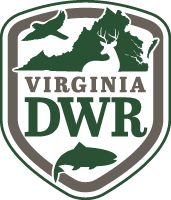Carol Annis-River Otter
River_Otter_Aleshia_Matthews_1280x700 Two River Otters on River Bank
Notes042122VBWTOtter
Fact File
Scientific Name: Lontra canadensis laxatina
Classification: Mammalia, Order Carnivora, Family Mustelidae
Identifying Characteristics
This species has a large, weasel-like, long, and slender body with small eyes, ears and head, short legs, webbed toes and a tapering tail. The fur is dense, soft, short, and rich brown above, paler below. They have a total length from 900-1270 mm, and a weight 10-25 pounds. The males are larger than the females. The breeding season is about 3 months in the late winter and early spring. A litter of 1-6 kits is born from March to April in natal dens (overhanging banks, tree knots and abandoned stream bank burrows). This species does not dig its own burrow. The male avoids the area of birth but rejoins the family while the young learn to swim. The family group stays together for 6 months-1 year. They are active any hour (peak feeding dawn-midmorning, evening) and season. Life span for the otter in the wild is usually 8-9 years.
Distribution:
The range of the river otter is throughout Virginia. This species is semi-aquatic or almost entirely aquatic and they are most abundant in food-rich coastal areas and the lower parts of streams and rivers. They use drift piles and logjams, and are found among tree roots. They occasionally use duck blinds and abandoned boat houses.
Last updated: August 18, 2023
The Virginia Department of Wildlife Resources Species Profile Database serves as a repository of information for Virginia’s fish and wildlife species. The database is managed and curated by the Wildlife Information and Environmental Services (WIES) program. Species profile data, distribution information, and photography is generated by the Virginia Department of Wildlife Resources, State and Federal agencies, Collection Permittees, and other trusted partners. This product is not suitable for legal, engineering, or surveying use. The Virginia Department of Wildlife Resources does not accept responsibility for any missing data, inaccuracies, or other errors which may exist. In accordance with the terms of service for this product, you agree to this disclaimer.

